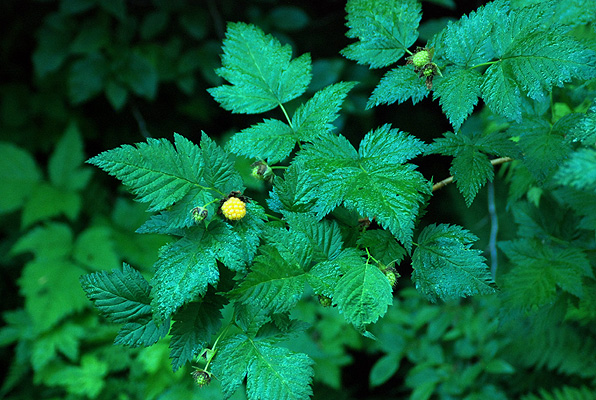Interactions
This organism exhibits a mutualistic relationship with other
species, especially animals. As I previously stated in my
habitat page, Salmonberries provide
food and protection for animals such as bears, deer, elk,
raccoons, birds, etc. This shrub can supply cover for smaller
animals in bad weather, from predators, and even as a home.
Also, these animals eat the drupelets and pass the seeds through
their digestive tract. This allows the seeds to spread to
different areas for growth. Rubus spectabilis
is a primary producer in the food web because it is an
autotrophic organism.
Salmonberries were used by many Indian tribes and early
settlers for medical purposes in the United States. Burns were
treated using the bark or leaves. The bark w as turned into a
powder to soothe the burns. The leaves were used to help
children sleep. Certain tribes used parts of the organism for
different things. For example, the tribe Bella Coola used root
bark to help ease stomach troubles. The Quinault used various
forms to help ease labor pains and also to soothe burns. The
leaves were used in many teas to help soothe the sick and to
relax them, also.
as turned into a
powder to soothe the burns. The leaves were used to help
children sleep. Certain tribes used parts of the organism for
different things. For example, the tribe Bella Coola used root
bark to help ease stomach troubles. The Quinault used various
forms to help ease labor pains and also to soothe burns. The
leaves were used in many teas to help soothe the sick and to
relax them, also.
|
Leaves and drupelets of Rubus spectabilis Photo courtesy of: Pat Breen, Oregon State Univ. |
<---- Previous Page Home Next Page ---->